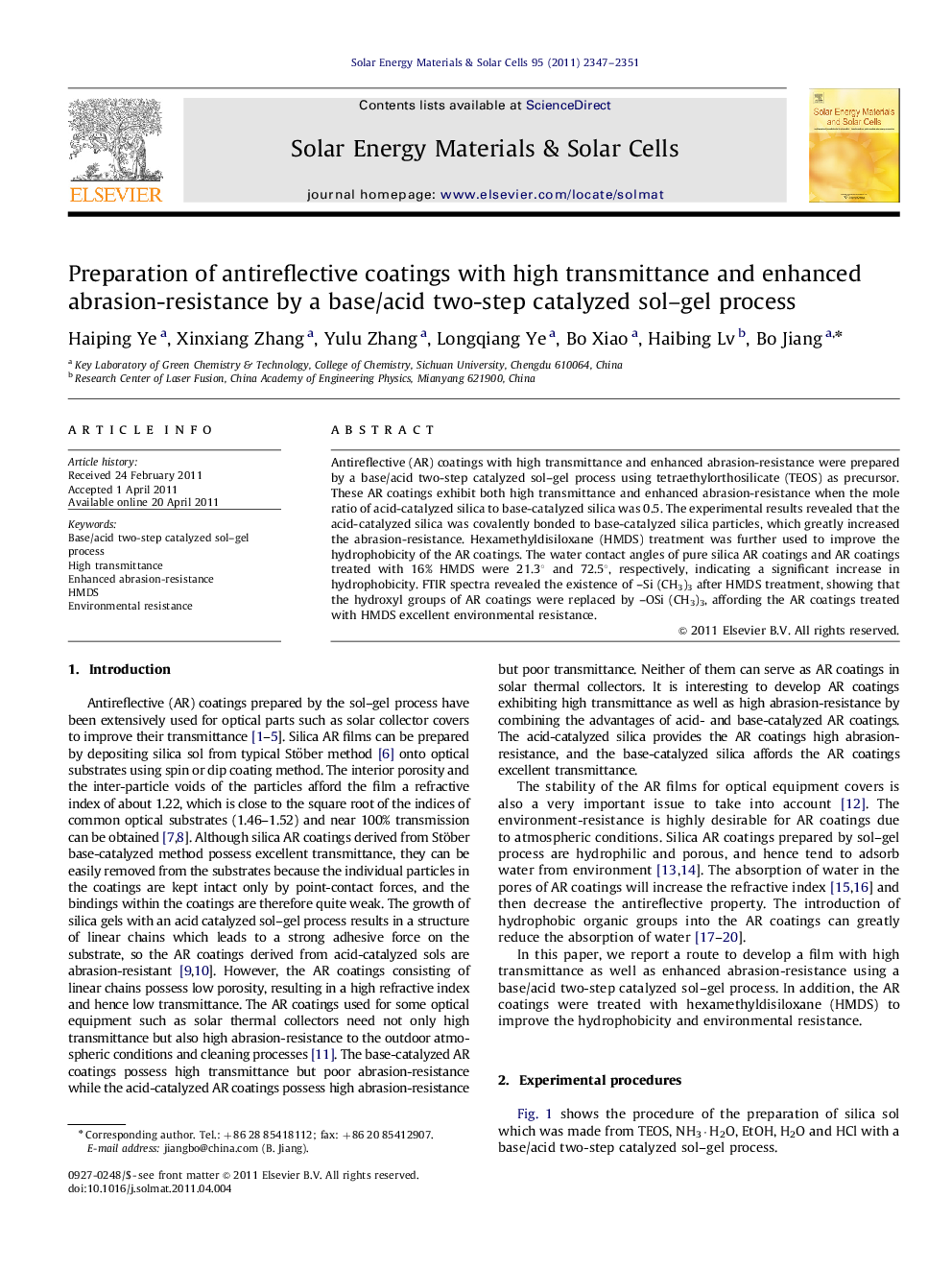| Article ID | Journal | Published Year | Pages | File Type |
|---|---|---|---|---|
| 78788 | Solar Energy Materials and Solar Cells | 2011 | 5 Pages |
Antireflective (AR) coatings with high transmittance and enhanced abrasion-resistance were prepared by a base/acid two-step catalyzed sol–gel process using tetraethylorthosilicate (TEOS) as precursor. These AR coatings exhibit both high transmittance and enhanced abrasion-resistance when the mole ratio of acid-catalyzed silica to base-catalyzed silica was 0.5. The experimental results revealed that the acid-catalyzed silica was covalently bonded to base-catalyzed silica particles, which greatly increased the abrasion-resistance. Hexamethyldisiloxane (HMDS) treatment was further used to improve the hydrophobicity of the AR coatings. The water contact angles of pure silica AR coatings and AR coatings treated with 16% HMDS were 21.3° and 72.5°, respectively, indicating a significant increase in hydrophobicity. FTIR spectra revealed the existence of –Si (CH3)3 after HMDS treatment, showing that the hydroxyl groups of AR coatings were replaced by –OSi (CH3)3, affording the AR coatings treated with HMDS excellent environmental resistance.
Graphical abstractSchematic representation of reaction process of base-catalyzed silica (a), acid-catalyzed silica (b), and base/acid two-step catalyzed silica sol (c).Figure optionsDownload full-size imageDownload as PowerPoint slideHighlights► Antireflection coatings with high transmittance and high abrasion-resistance. ► By a base/acid two-step catalyzed process. ► Adjust the weight ratio of acid-catalyzed silica. ► HMDS treatment improves the hydrophobicity and environment-resistance.
